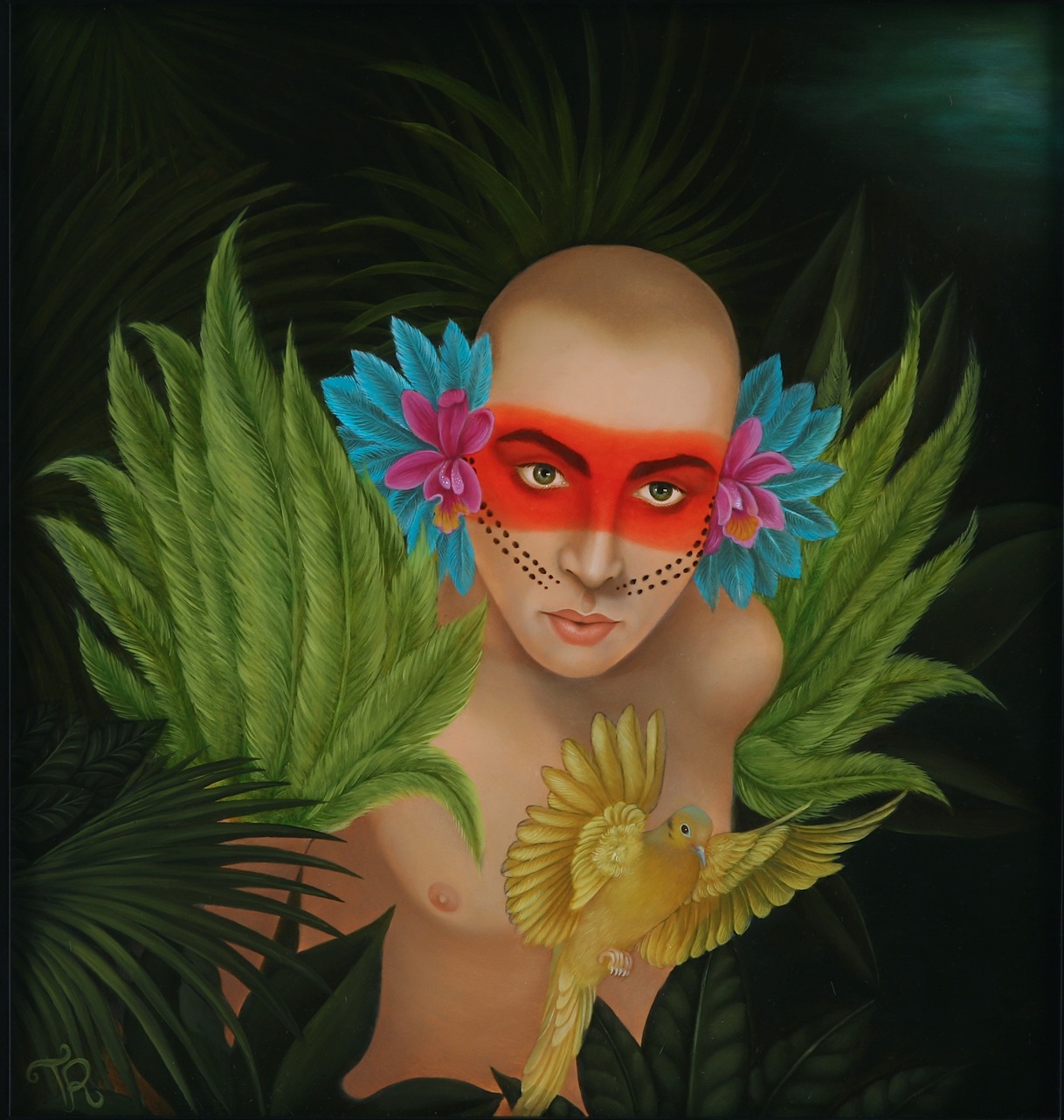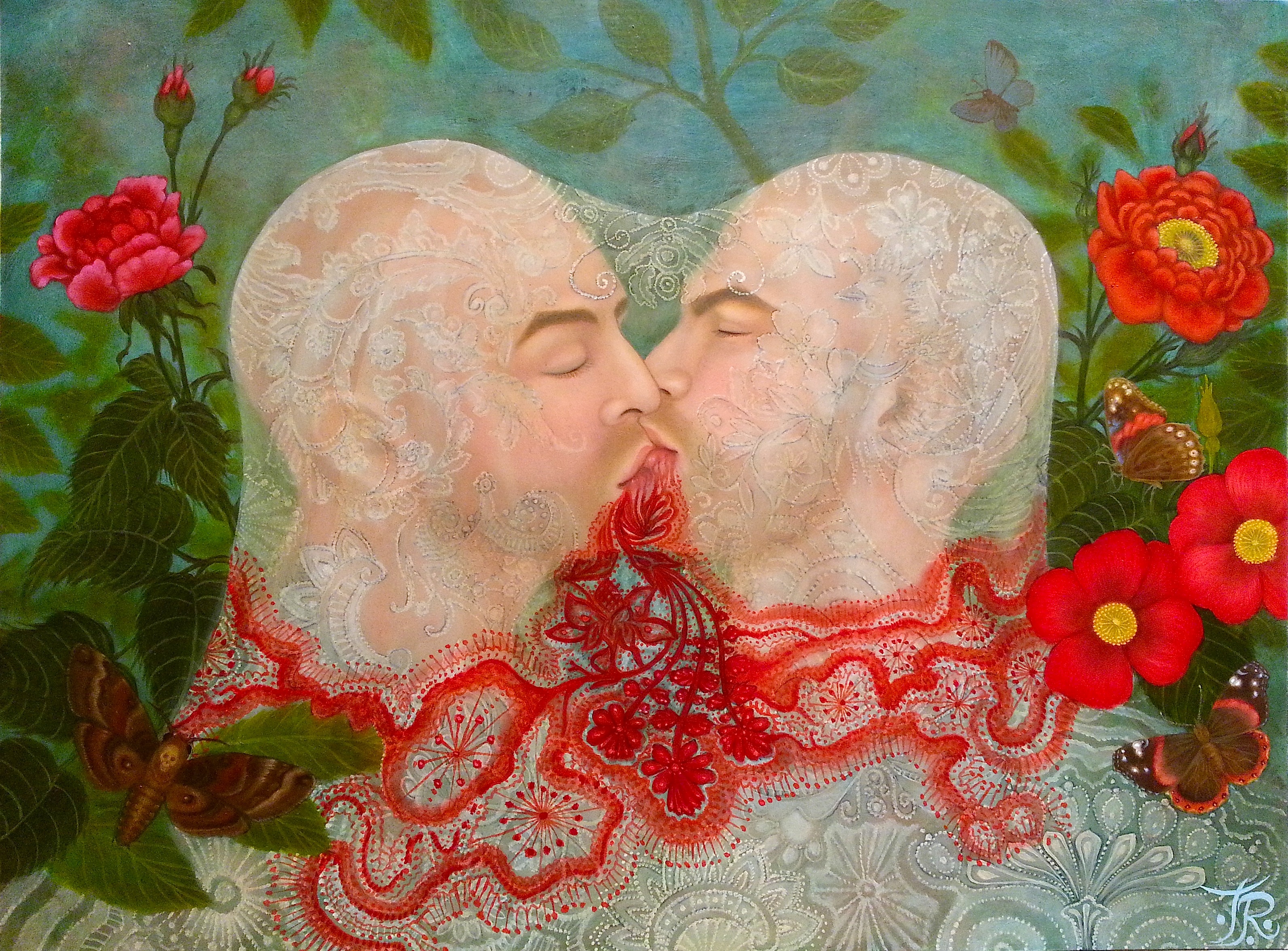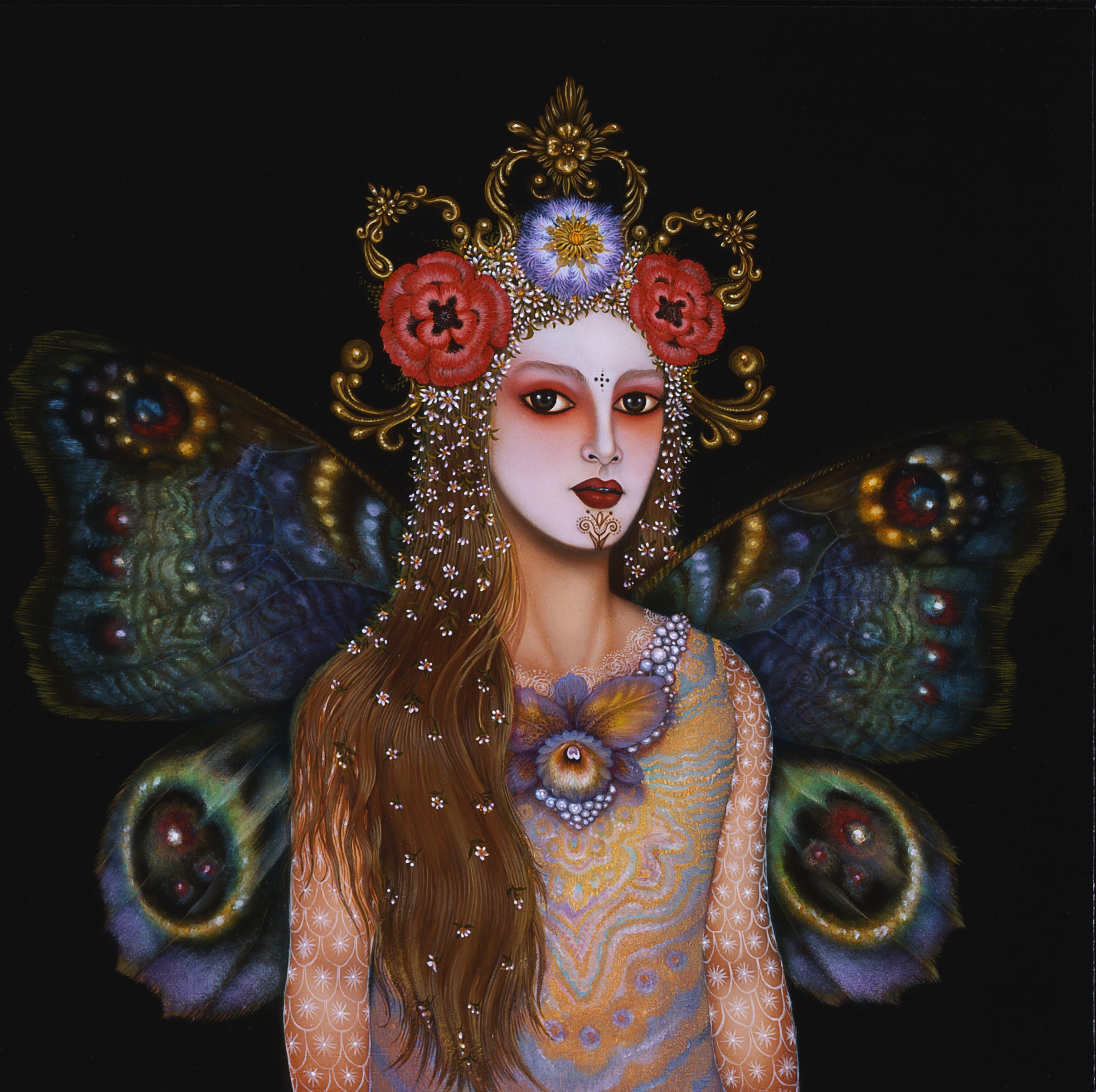My work emerges from a need to express and question who I am. Using myself as the subject of my work both questions and reaffirms my position, not only in society but also in the macroscopic world, both physical and metaphysical. Some of the themes in my work are: The Self, Dreams, Gender, and Fairy Tales.
The Self:
The medieval invention of the self-portrait introduced a dimension of mystery to the practice of painting. It is impossible to count the painters who, like master masons carving the keystone of an arch, succumbed to the temptation to leave a record of what they looked like. At first, they slipped portraits of themselves into groups of worshippers in their paintings: Hans Memling stands as a curious onlooker behind the retable of Sir Donne, and Botticelli painted himself in the proud posture of one of the powerful men in Florence, with whom he spent his time. The power of the self-portrait over the spectator comes from the fact that the painter’s relation to his/her image incorporates the mirror, which evokes a transparent field; with a gaze and a few signs, the self-portrait creates a novel in itself.
I mostly paint self-portraits, and since an interest in the self has always been linked with narcissism, I must redefine the position as the subject of my work. Unlike Narcissus, I do not see the image of myself as an illusion that I may fall in love with. I see myself in the mirror, but the mirror is broken, shattered; each little piece of mirror reflects a different me. I am multiplied, like cells multiply inside the body. I transform myself for each painting. I carefully investigate fashion, architecture, landscape, flora, fauna, and symbolism. I don’t just paint fantasy; I paint a reality that goes beyond the borders of the framed painting. Most of these paintings depict clothing or objects I possess. Each of my paintings is a performance that I perform for myself. I offer myself to my own gaze. I see myself through my own eyes.
Dreams:
Dreams are involuntary products of the psyche. They present us with a bewildering array of images and feelings, familiar and unfamiliar, all of which have something to teach us. The communicative power of dreams has been acknowledged for millennia: the ancients credited them with the power of prophecy, and in Egypt, the gods were believed to speak through the dreams of the pharaohs. However, the interpretation of dreams has always been fraught with uncertainty because the messages they carry emerge in an ambiguous and indistinct form. A dream is a narrative and often a highly condensed one, spanning an awesome amount of material with specialized, symbolic shorthand. Although many dream symbols are associated with universal archetypes, their precise meanings are mutable, depending on the psychology of the dreamer and on the context in which they appear in the dream.
My work deals with dreams, but my goal is not to depict or describe dreams. I find dreams as an inspiring source of information because they represent enigmas. I connect the process of dreaming with irrationality; when we’re conscious, we rationalize everything by virtue of our intellect. I have always admired the bizarre, obscure, incongruous, unknown, and mysterious because these qualities are often shadowed by irrationality and because they represent fear and darkness. In our society, we tend to forget that the concept of light would not exist without the concept of darkness. Jean Genet said, “A man must dream a long time in order to act with grandeur, and dreaming is nursed in darkness.”
Gender:
Our society has been successful in creating roles for both women and men. This creation has limited our performances in the sense that we are labeled from birth and therefore coerced to take role one or the other, but never both. Gender is not a natural occurrence; on the contrary, it is an artificial construction, a masquerade, a simulacrum. Anyone who does not fit in the role of woman or man is considered deviant. Gender is a constructed idea that I am trying to deconstruct with my work. I paint people who are neither feminine nor masculine; they are androgynous.
Many spiritual and occult traditions have taught that completeness of being can be achieved only internally, in the union of the male and the female principles that we each carry within us: the opposing active and passive forces of creativity. In the East, this idea of inner union finds expression in the tai-chi symbol and in Hindu and Buddhist tantra, in which a male and a female deity are entwined in an embrace so intricate that the two appear to inhabit a single body. Western occult and alchemical traditions express the attainment of inner reconciliation as the hermaphrodite or androgyne, a being at once male and female. In Jewish legend, Adam was hermaphroditic until Eve was separated from him. And in some Greek mythological accounts, Zeus was simultaneously male and female. Thus the androgyne questions the confining roles of male and female. It contemplates the idea of completion, of wholeness. It puzzles and confuses. Thus the sharp lines between being a woman or a man are blurred.
Fairy Tales:
Fairy tales are optimistic, no matter how terrifyingly serious some features of a story may be. This sets the fairy tale apart from other stories in which equally fantastic events occur, whether the happy outcome is due to the virtues of the heroine/hero, to chance, or to the interference of supernatural figures.
Fantasy, growing out of the fundamentally optimistic fairy tale, represents a uniquely positive response to dissatisfaction. The fantastic responds to destructiveness by building toward disorder through imagining order and to despair by calling forth wonder. My work responds to this characteristic of storytelling. I grew up in a harsh social environment, in which I had to protect myself on a daily basis. To endure, I invented fairy tales constantly in my mind, mostly about escape and transformation. In my stories, I was the hero and heroine; sometimes my escape was aided by someone else. I fantasized to survive.
My work does not offer concrete answers. Instead, the poetic essence of my paintings questions literal and rational meanings. I am not interested in answers because I do not think there are absolute ones. Most questions are enigmas that we carry within ourselves, and they are part of our multilayered, complex existence. Novalis said: “Poetry heals the wounds inflicted by reason.” I think the same of my paintings, which I consider visual poetry.







